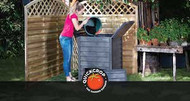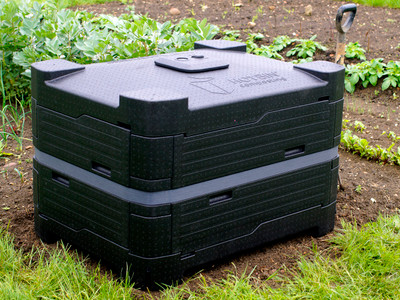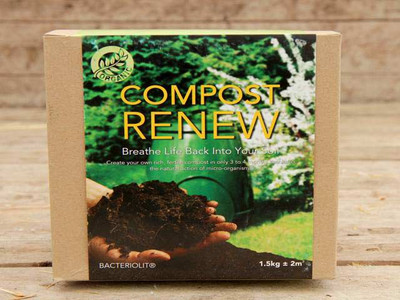A Guide to Making Homemade Compost

Why Compost in the first place?
Composting is the best thing you can do for your vegetable garden. It is the natural process that returns the nutrients used by growing plants back to the soil.
Vegetables need high fertility soil to give the return expected of them. We remove a large proportion of the plant material from the soil when we eat it; returning these nutrients to the garden balances the debt and restores the natural cycle. Adding sufficient compost to your soil will lead to healthy and vigorous crops.

Garden compost is an environmentally friendly gardening practice as it re-cycles green waste and uses it to grow new plants. It is a home version of the same cycle which built all the soils which cover the Earth.
Not only is composting cheap and renewable, it will also reduce waste in your household and encourage you to think about what you buy and the process of waste in general: how much things we buy with excessive packaging, rubbish that doesn’t break down naturally etc.

The Incredible Hungry Bin Worm Composter
View Product
The Benefits of Homemade Compost
If you could get your hands on a soil-improving natural slow-release fertilizer for free you'd use it, right? When we send green waste to landfill, we're wasting an opportunity to improve our gardens and participate in one of the most important cycles in nature.
Organic compost is sometimes colloquially referred to as ‘black gold’ because of its soil-improving qualities.

When you consider how much you save in terms of a) the expense of getting rid of green waste and b) money spent on fertilizer or soil amendments, it makes a whole lot of sense.
Homemade compost is extremely effective when used as a mulch. Mulch is a thick layer of material spread over soil or around flowerbeds. It’s used to prevent weeds gaining a foothold and to help the soil retain moisture.

When organic material compost is used as a mulch, it feeds the soil with nutrients and allows beneficial microbes to flourish. These nutrients will in turn help feed your plants. It will also attract earthworms, who enrich the soil in a number of ways: improving drainage, soil structure, nutrient availability and soil aeration.
How to Compost
You can set up a simple compost pile in the garden, but a compost bin is more effective in a number of ways. A bin or other container keeps the heap tidy and also helps keep heat in, which speeds up the process. Quickcrop stock a range of compost bins which you can view at this link.

Composting basics
Many people are put off by composting because they end up with a bin full of foul-smelling gunk, which is as far away from the ideal image of crumbly 'black gold' as it's possible to get. I remember my first attempts were just like this and nearly put me off the whole thing. The good news is that the remedy is usually pretty simple, and once the right balance is achieved you'll never look back.
What can you compost?
You can compost any garden waste including vegetable or ornamental plant waste, weeds, grass clippings and leaves. You can also add raw kitchen waste including potato and carrot peelings, apple cores, tea bags and coffee grounds.
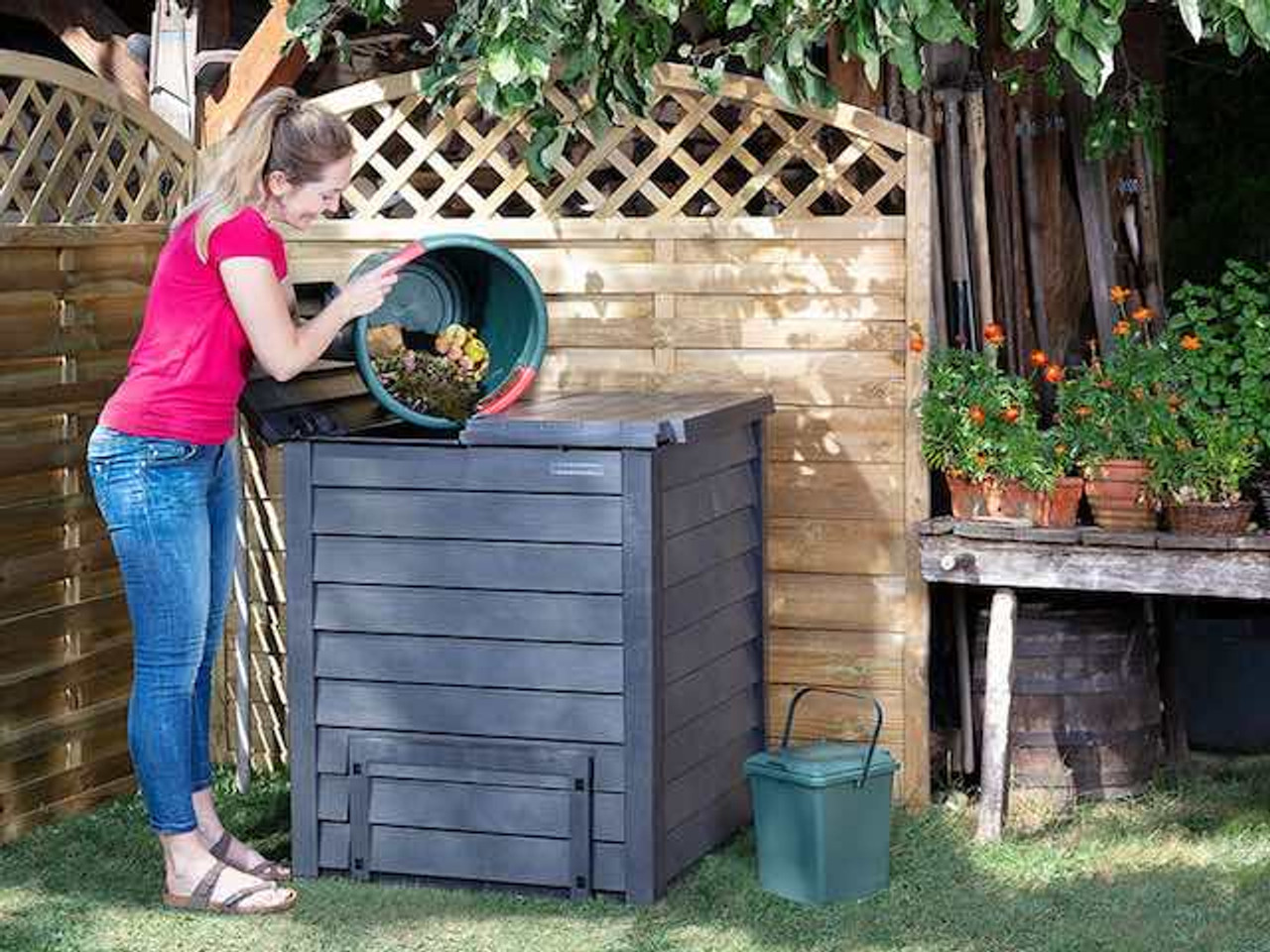
Thermo Wood Composter
View Product
What can’t you compost?
It is not a good idea to compost cooked food, animal waste, meat or fish or potatoes effected by blight. You should also avoid citrus peelings as the citric acid they contain will slow the composting process.
How to start composting
A compost bin needs three main elements to work; carbon, nitrogen and oxygen. In general, carbon comes from dry brown material (such as dry leaves, cardboard or wood chippings) while nitrogen comes from green material (food scraps, grass clippings, coffee grounds and teabags). Air is introduced by either turning the compost with a garden fork or rotating the compost bin itself.

Ideally you want an even mix of ‘green’ and ‘brown’ materials. If you had a large shredder and a ready supply of green and brown ingredients, you could create a mix which would compost very quickly. This would most likely result in a perfect crumbly and dark brown compost. The smaller and better mixed the carbon and nitrogen particles, the faster they will break down.
Most gardeners, however, add compost to a heap when they have material available. When it comes to static compost bins or heaps - whether they are open pile, wooden or plastic - for best results you should layer materials to achieve a good balance. Insulated high-heat composters (such as the Hotbin) or tumbling composters (such as the Joraform models) will require less hands-on input from you; more on them a bit later.

There are usually plenty of vegetable peelings and green garden waste available. However many people find it difficult to gather enough brown material for their composters, which results in the aforementioned foul-smelling sludge. A good idea is to gather a few sacks of leaves in the Autumn to add to your pile throughout the year. The more bulky dry brown material allows air through the heap and keeps the composting process going.
As regards ratio, I find the best mix is 2 parts green x 1 part brown (by weight). In volume this will look more like 50/50, as the brown material weighs less than the green.

To start a compost heap, place a layer of brown material at the base of the pile: straw, paper, shredded hedge clippings or cardboard are ideal. Add alternate layers of green and brown material at a depth of about 5-10cm.
Depending on how much waste you have in your garden, your compost bin may never reach the top as the lower layers rot down and compact. The lower layers of finished compost are removed for use in the garden while you continue adding layers to the top.

Compost Thermometer
View Product
Keeping your compost healthy
Making compost is not difficult; it is constantly happening without any help from us whenever organic material dies and begins to decompose. Whatever mix we put on a compost heap will eventually break down anyway but we can control the speed of the process and, to some extent, the quality of the finished product.
Any issues which may arise (bad smells, slow composting, wet compost etc..) are usually easily remedied by changing the ratio of ingredients or adding some air.

Air is a crucial ingredient to your compost. The micro organisms that break down your kitchen and garden waste need oxygen to breathe and do their work. If they have plenty of air they multiply faster, work harder and produce more heat.
You can create air spaces in your compost by layering in bulky material like hedge trimmings or bulky cardboard (e.g. egg boxes) as you fill. You can also introduce air into a compost heap by turning the compost with a garden fork.
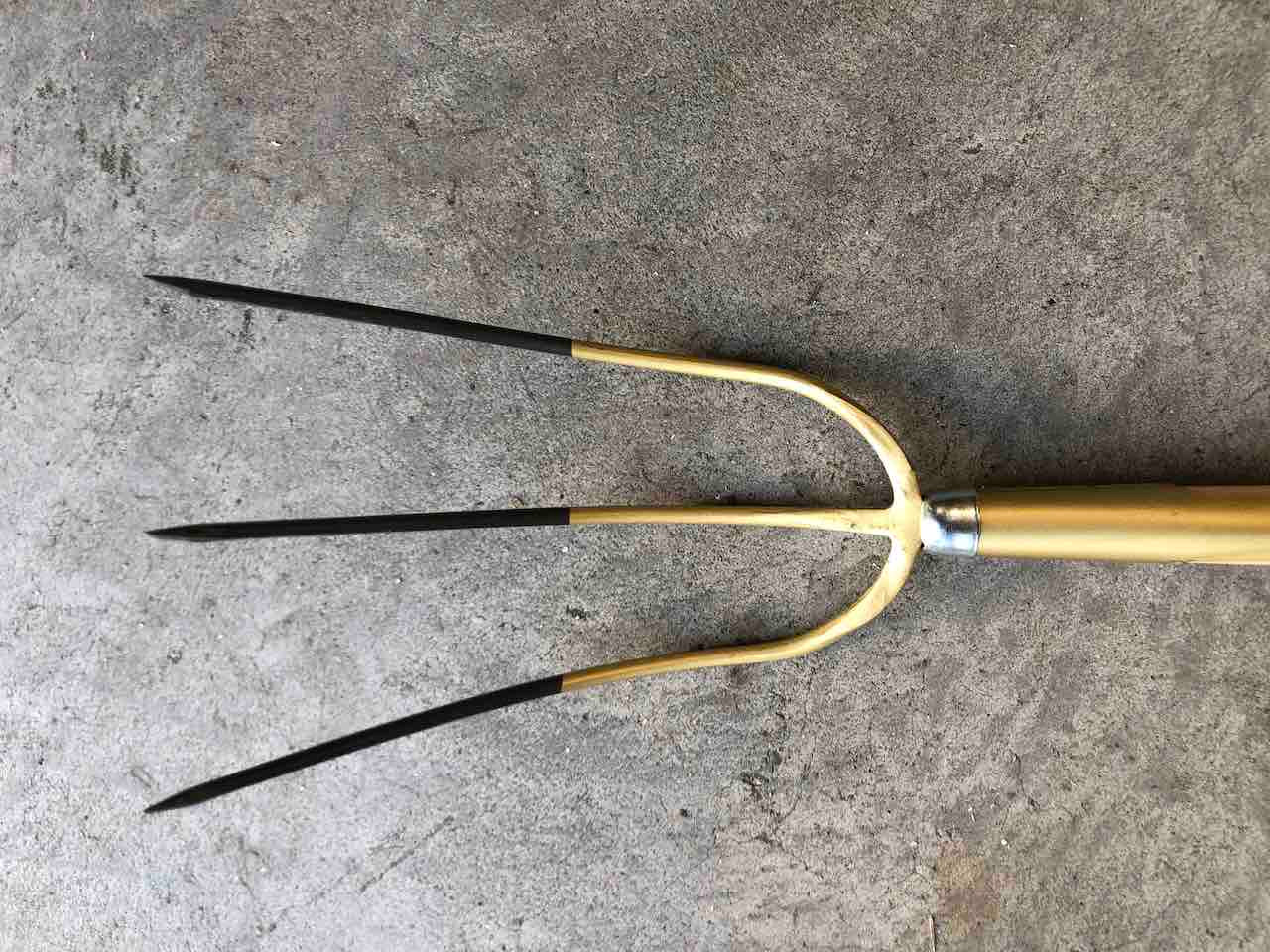
Taifun Hay Fork
View ProductIf you live in a wet area you should also cover your compost heap, as water fills up the air spaces in the material and will prevent your pile from working properly.
All plastic compost bins will have a lid, but if you're using a wooden structure or an open pile it's important to protect it from the rain. Your heap should be moist but not soaking. A compost bin can be covered with a lid or a layer of old carpet. A square of foam insulation board under the carpet helps to retain more heat.

Can I make enough compost to feed my garden?
You will likely never be able to make enough compost from the waste generated in your garden to supply the needs of your soil. As already mentioned, this is because you eat much of the material produced, which in turn has used up nutrients on the way to your plate.
You will need to supplement your home compost, whether it’s with store-bought mixes, composted horse manure (your local farmer may be able to help you out), or seaweed products. Having said that, your homemade stuff is still an essential part of this mix, and it will reduce the amount of input you need from elsewhere.

Bulk Bag Of Organic Compost - England & Wales Only
View Product
Types of compost bins
Home compost bins come in a range of shapes and sizes, mostly dictated by the size of your garden. A static plastic compost bin is usually sufficient for a small to medium urban garden, whereas a large heap or wooden composting system is better if you have a larger amount of garden waste to process.
The method you use in making compost will vary slightly depending on which type of composter you use. Closed plastic units, for example, have less air circulation so require a drier, more careful mix, whereas an open timber structure allows you to be a bit more free with your ingredients. Vermicomposting systems meanwhile require you to add compost worms known as red 'wigglers'.

The New Zealand Box System
The New Zealand Box system works by adding air as the material is moved between the 3 bays shown above.
Compost material is added to the first bin where it completes it's first stage: this is the hot compost stage that generates the most heat.
After 6-8 weeks the hot compost pile is turned into the second bay, which mixes it and introduces air. This triggers a secondary compost cycle that does not create as much heat as the first but breaks down the material further. After 4 weeks the material can be turned into the final bin, where it can be used as needed.

Treble Bay Easy Access Timber Composter
View ProductSome tips on composting
Hot Composting
Hot composting means getting your pile up to 60°C, which has the advantage of speeding up the process and killing off any weed seeds and pathogens. To create a hot compost pile without an insulated container, the size of your structure will need to be 3ft x 3ft x 3ft - anything smaller will not generate enough heat.
You can only really do hot composting in the Summer, as it is the green material that provides the heat and it is unlikely you will have enough in the Winter months.
As we've said any compostable material will eventually decompose no matter what ratio it is added to your pile but hot composting will require the right mix of material to get it up to temperature as follows: (nitrogen/carbon)
12 month hot composting
It is possible to hot compost year-round by using an insulated compost bin, which can retain the heat when outside temperatures fall. Apart from the usual hot compost advantages of killing off weed seeds and pathogens, the insulated compost bin also has the added advantage of being able to handle meat, fish and cooked food waste.
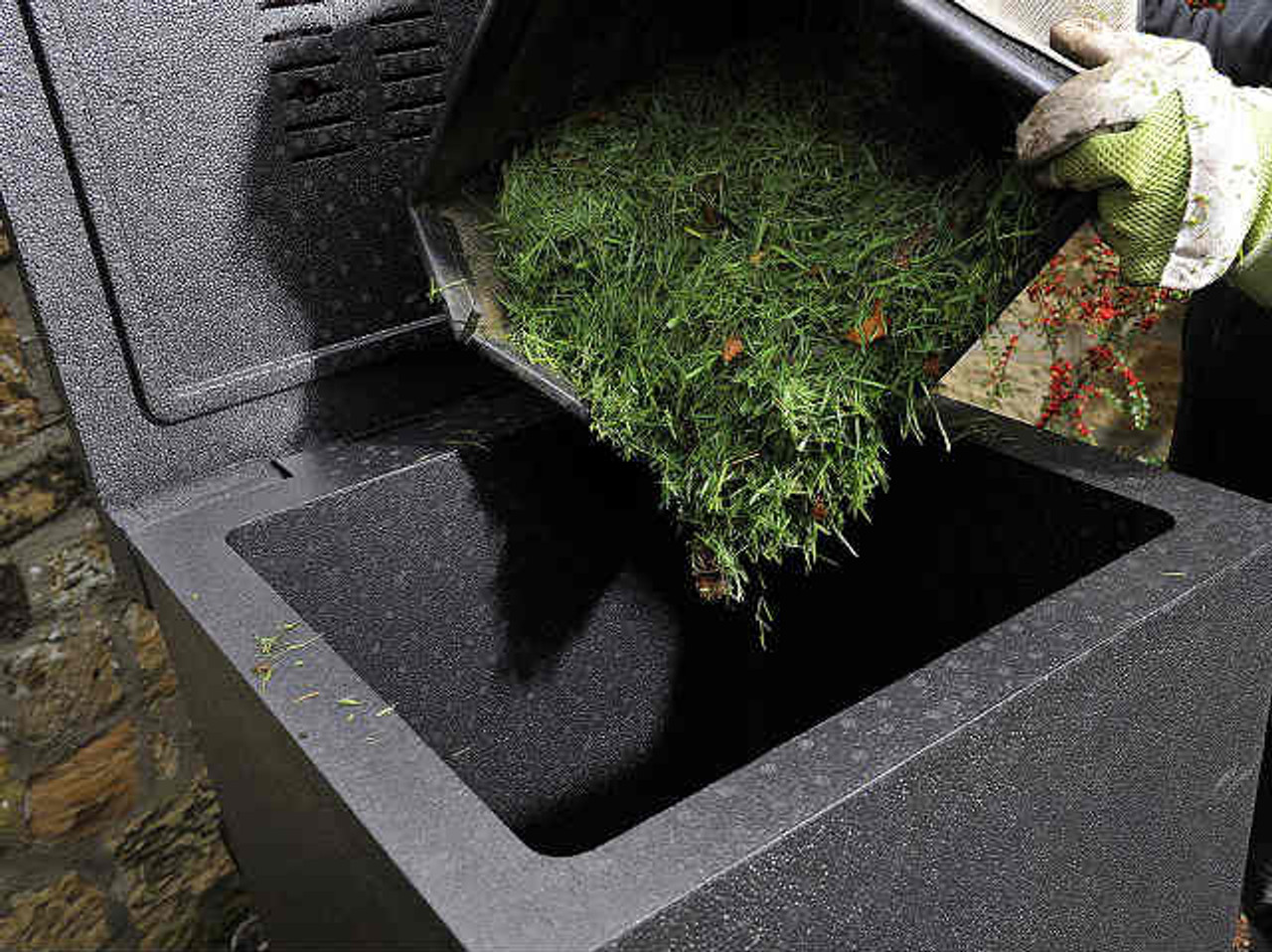
Hotbin Composter - Hot Compost Bin 200 Litres
View ProductClearly, expanding the amount of waste you can deal with makes sense especially with increasing bin charges; this helps justify the cost of the unit which, to be fair, is not cheap.
An insulated compost bin also composts much quicker (a full cycle takes 6-8 weeks) so can handle a lot of material over the year. You have 2 main options to choose from: the Joraform rotating drum compost bin (which is available in 3 sizes), or the Hotbin which looks more like an insulated wheelie bin.

Joraform Compost Tumbler JK270 'Big Pig'
View ProductThe advantage of the Joraform is that it rotates, so it is easier to correct your mixture if required and to introduce air into the mix. It is also galvanized steel so completely rodent proof.
The Hotbin looks like a standard wheelie bin but is made from thick insulated foam. It makes compost just as quickly and is easy to use once you get the hang of it. This option is significantly cheaper than the Joraform, but works on the same principle.
As we know air is crucial in your compost heap, so you need to make sure you allow air spaces in the material when filling a Hotbin. The company provide a bulking agent for your first cycle (this is bulky shredded bark) which is layered between dense, nitrogen rich material. We can provide this material in bags if you need it, but hedge prunings or anything else that creates air spaces will do just as well.
We have more info on the composting solutions available to you in this blog post.

Compost activators and accelerators
You can add quantities of manure (poultry is particularly good) as the fungi, bacteria and nutrients they contain will be especially beneficial.
There are a number of 'off the shelf' compost activators like 'Vitax Compost Maker' (which adds nitrogen) or the excellent organic 'Compost Renew', which contains a special mix of beneficial bacteria.

Compost Renew - Compost Accelerator 1.5kg
View Product'Rockdust' or ground volcanic basalt can also be added periodically to compost - a handful at a time - to add minerals. This will benefit your garden when the finished compost is finally spread.
Common Compost Problems
Soggy, smelly compost
"My compost bin smells!" is a very common complaint. It's even more likely when using enclosed plastic compost bins. The reason is usually too much green material and not enough fibrous brown. To remedy, add crumpled paper, cardboard, dry brown leaves or other high-carbon ingredients.

Soggy compost can also occur in an open bin where too much rain is washed through, or if the compost bin is built on a site with poor drainage. Cover the pile as detailed above to protect against rain, and move or build an elevated base if the site is wet.
Dry compost
Dry compost that doesn't appear to be breaking down is due to too much brown material. Carbon takes a very long time to decompose unless mixed with nitrogen-rich material. To remedy, add more green material like grass clippings - and mix well.

If you have large amounts of dry twiggy material, it will need to be chopped and mixed with your greens. Otherwise it creates a fibrous mat that moisture simply drains away through. This material will also be the culprit if you have uneven finished compost, as you end up creating pockets where moisture and heat is lost.
Pests
With an open compost heap, rodents can be a potential issue as they seek food or warmth. You can mitigate this in a number of ways: hardware cloth or ultra fine mesh placed along the bottom can make it harder for rodents to access the pile, while it’s important to avoid adding cooked food or dairy.

Bokashi Bin x 2 With 1kg Bran
View ProductThere is another option: pre-fermenting food waste in a bokashi bin leads to a largely odour-free mixture that can then be added to the compost pile. If there is a smell, it's a sour pickled odour that is much less attractive to rodents.
However, if you have a rodent problem or activity the most foolproof option is an elevated and insulated tumbling composter such as the Joraform.
